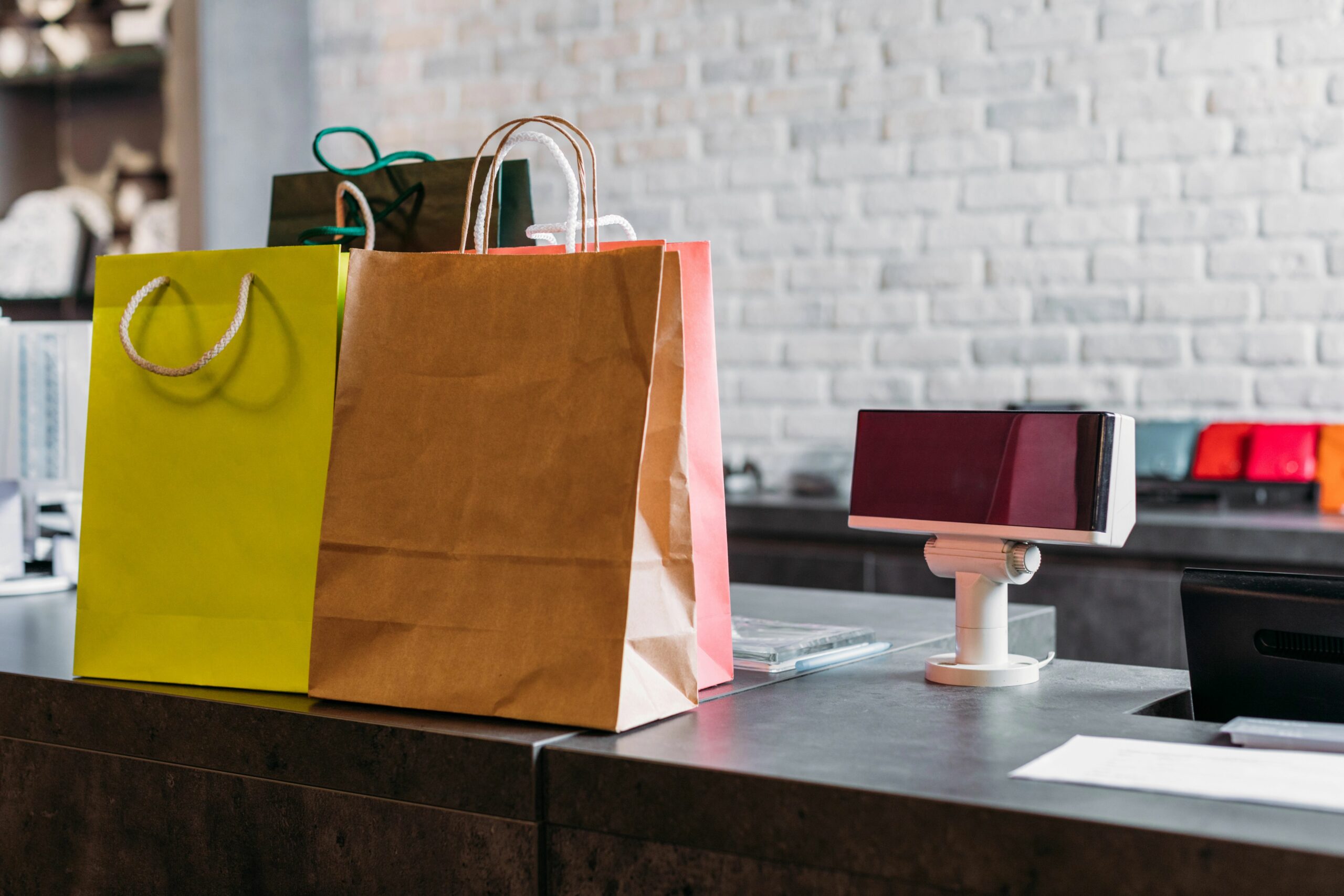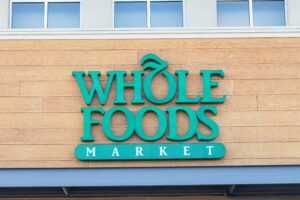
AndrewDemenyuk/Depositphotos.com
August 7, 2025
While Retail Sales Saw a Strong First Half of 2025, Will ‘Cracks Starting To Show’ Worsen in Months To Come?
The U.S. retail sector as a whole showed resilience through the first half (H1) of 2025, according to a recent article detailing data from both Colliers and Placer.ai, penned by Nicole Larson.
Of note, foot traffic overall showed improvement YoY in H1 2025, which Larson suggested indicated both the overall resilience of the American consumer base as well as continued demand for brick-and-mortar shopping. Car washes (up 10.3%), theaters and music venues (9.2%), attractions (5.6%), and fitness venues (4.3%) lead the way, however, signaling that experiences continued to resonate with consumers — but discount and dollar stores (up 2.9%), clothing retailers (2.6%), department stores (2%), grocers (1.7%), hobbies, gifts, and crafts (1.5%), and furniture stores (1.4%) also saw an uptick in traffic.
Conversely, beauty and spa services (down 0.6%), fast food restaurants (-0.7%), pet stores (-1%), electronics stores (-1.1%), superstores (-1.1%), home improvement stores (-1.4%), gas stations and c-stores (-1.5%), restaurants (-1.6%), sporting goods outlets (-2.3%), and drug stores and pharmacies (-2.6%) saw less foot traffic in the first half of the year.
Breaking out the top 10 chains which saw a change in year-over-year foot traffic, based on Placer.ai data, produced the following list:
- Chili’s Grill & Bar (up 21.7%)
- Crunch Fitness (10.1%)
- GameStop (9.5%)
- LA Fitness (9%)
- Staples (8.2%)
- Hobby Lobby (7.5%)
- Nordstrom (6.5%)
- Ollie’s Bargain Outlet (6.3%)
- HomeGoods (5.9%)
- Barnes & Noble (5.3%)
“Several chains catering to mid- and high-income consumers — including Nordstrom, Staples, LA Fitness, and Barnes & Noble — experienced significant growth in visits per venue,” Larson wrote.
“This suggests that while value matters, brands don’t need the lowest prices to win customers. Consumers want confidence that they’re getting their money’s worth. Brands that effectively communicate their value proposition can thrive, no matter the final price point,” she added.
Retail Sales Held Firm in H1 2025, But ‘Cracks Are Starting To Show’
Examining a graph attached to the report — one which showed core retail sales holding at ~2.5% growth in the first half of 2025, versus 2024 — Larson pivoted to point out that much of the vaunted consumer resilience trumpeted by headlines had been definitively propped up by high-income households. By contrast, middle- and lower-income households had curtailed their spending. By extension, she explained, retailers who can cater to wealthier demographics, or whom can successfully promote their value proposition, are and will do better than those who fail to capitalize.
“Retailers should note that underlying volume growth, which strips out inflation and tariff-influenced buying, has been consistently weaker than top-line figures suggest. Analysts warn that this could foreshadow softer performance in the second half of 2025, especially as inflation, interest rates, and tariff impacts start to ripple more clearly through the supply chain,” Larson added.
Finally, the report turned to discuss vacancy rates as part of the equation: Projected to hold steady, particularly given a significant 45% drop in new construction, closures in freestanding formats (described examples including pharmacies and discount stores) could spur localized increases. Asking rents are expected to tick upward by about 2%, attributed to limited supply and strong tenant demand.
Overall, store-based retail sales are projected to grow by 1.5% as 2025 draws to a close (notably lower than the 2% seen thus far in H1), taking down a 76% share of all retail sales. One caveat: “Elevated inflation could weigh on consumer volume growth and leasing momentum in more price-sensitive segments,” Larson concluded.
Discussion Questions
Will the seeming strength exhibited by the U.S. retail sector in H1 2025 manage to maintain momentum through the second half? Why or why not?
Will middle- and lower-income consumers show continued reluctance to spend on a long-term basis, or is this a passing trend related to current economic headwinds?
Poll
BrainTrust
Gary Sankary
Retail Industry Strategy, Esri
Paula Rosenblum
Co-founder, RSR Research
Neil Saunders
Managing Director, GlobalData
Recent Discussions








How strong was the first half? In value terms, core retail sales grew by 2.8%. However, a lot of this was driven by inflation and price increases. Volume growth came in at just 0.2%, which is far from robust. Our consumer signals data also shows cracks. Value channels are gaining share, shoppers are taking longer to make purchase decisions as they conduct more research, and people are using more stores as they shop around for deals. Importantly, much of the value spending growth is concentrated among higher-income households, while lower-income consumers are pulling back. At present, all of this suggests more pressure in the second half of the year.
Staples “caters” to mid- and high-income consumers? Staples?! Who knew.
This endless speculating is becoming rather tedious…isn’t it? If the economy slows – for any of a number of reasons ranging from tariffs to lack of confidence in government data to…well just pick something – then the cracks will widen; it it doesn’t, then they probably won’t. Prudent retailers will prepare for both scenarios…as the prudent usually do.
We act like the sales happened by magic. They didn’t.
Just as retailers brought goods in early, consumers did their shopping early. I think the first big test will be Halloween. Honestly, the whole Prime Day phenomenon will ultimately not prove helpful. The sales were just moved around.
i really wanted to write a second survey/report on the impact of tariffs on these enormous workforces, mostly low paid. It’s soon, but maybe my partners will get into it and a tech vendor will underwrite it.
but apparently, swipe fees are once again the story of the day. Why???
Chicken Little has been wrong about everything since the year began under a new administration.
As always, although I am in the minority, I am confident that the economy will continue to prosper for months to come. There are two reasons to be optimistic for every reason to be worried.
As the media’s hatred for Trump intensifies, mainstream news channels and political opponents report pessimistic and worst-case scenarios. The good news is that consumers don’t seem to pay attention.
Consumer confidence will remain high, and inflation rates have already stabilized. During the next few months, spending is likely to remain strong. However, it would be beneficial if interest rates were to decline, as they should.
Furthermore, I am confident that a good deal will be reached with China in the near future. As new plants open in the United States, there will be an increase in blue collar jobs.
Tax breaks, no tips tax, no social security tax, etc., won’t all be in effect immediately, but consumers know it’s coming.
Please accept my apology for overlooking all the reasons to jump on Chicken Little’s bandwagon.
David, I’m sharing an article from today’s Milwaukee newspaper:
https://www.jsonline.com/story/money/business/2025/08/08/weyco-group-hikes-shoe-prices-takes-other-steps-as-trump-tariffs-land/85516773007/
I hope we have a chance to review your comments six months from now. There is already evidence of slowing consumer confidence, and high prices continue to be an issue. (Food prices continue to rise, and where I live the cost of gas hasn’t budged.) The Milwaukee airport — along with airports around the country — is seeing sharp reductions in traffic this summer, whether due to high prices or other economic pressures on households.
A recent Wall Street Journal article detailed challenges in the manufacturing sector, casting doubt on your forecast of more blue collar jobs. (And, oh yes, AI-driven robots are displacing those blue collar jobs every day.) Last Friday’s BLS numbers painted a concerning picture, whether you choose to believe it or not…and next month’s numbers may not be credible.
None of this has anything to do with “the media’s hatred for Trump,” although the media are always a convenient target. I know you are facing a lot of contrary opinion on this site (including mine), but some critical thinking from all of us is overdue. Consumers are indeed paying atttention.
Seems like it would be more accurate to say that consumers are not paying attention to their bank accounts. We are at record debt and default rates. We even have an emerging default problem on BNPL.
Inflation rates have not stabilized, and the full brunt of tariffs is just now going into
effect. We have tariffed our way into a combination of higher prices and/or
lower margins and/or lower profits.
New plants opening in the USA…in what product categories and in what year? At what new costs and retails versus what we are paying today?
Tax breaks…tips…social security = fiction. Passing a bill that adds $4 trillion to the deficit = real.
It’s not about Chicken Little or a bandwagon. It’s about data. And now we have to worry
about data surviving in the real world.
Inflation has accelerated this year and will continue to accelerate in the second half. We’re already seeing upticks due to tariffs, and the most significant impact from tariffs is just now being implemented.
Job numbers are soft, so soft that the President decided to fire the statistician rather than address the problem. Eroding confidence in US data issues aside, the cracks are starting to show. Consumers, especially lower-income brackets, are pulling back. McDonald’s CEO reported that they are seeing a significant pullback from that segment, and it’s reflected in their numbers.
With some shoppers still spending and others pulling back, the second half of the year will be about focus. The brands that are most likely to succeed will be the ones that truly understand who their shoppers are, what they care about, and how to deliver value in ways that matter to them.
The disconnect between headline numbers and the underlying reality is glaring here. McDonald’s CEO’s take on lower-income spending declines is the canary in the coal mine. In our K-shaped economy, H1’s strength was primarily driven by high-income household spending and inflation, which masked weak volumes. H2 will expose which retailers understood this bifurcated reality versus those who believed their own growth stories. Retailers’ winning strategy isn’t serving “the middle,” it’s either going premium for affluent consumers or becoming genuinely value-oriented for stretched households. The middle ground is quicksand into irrelevance.